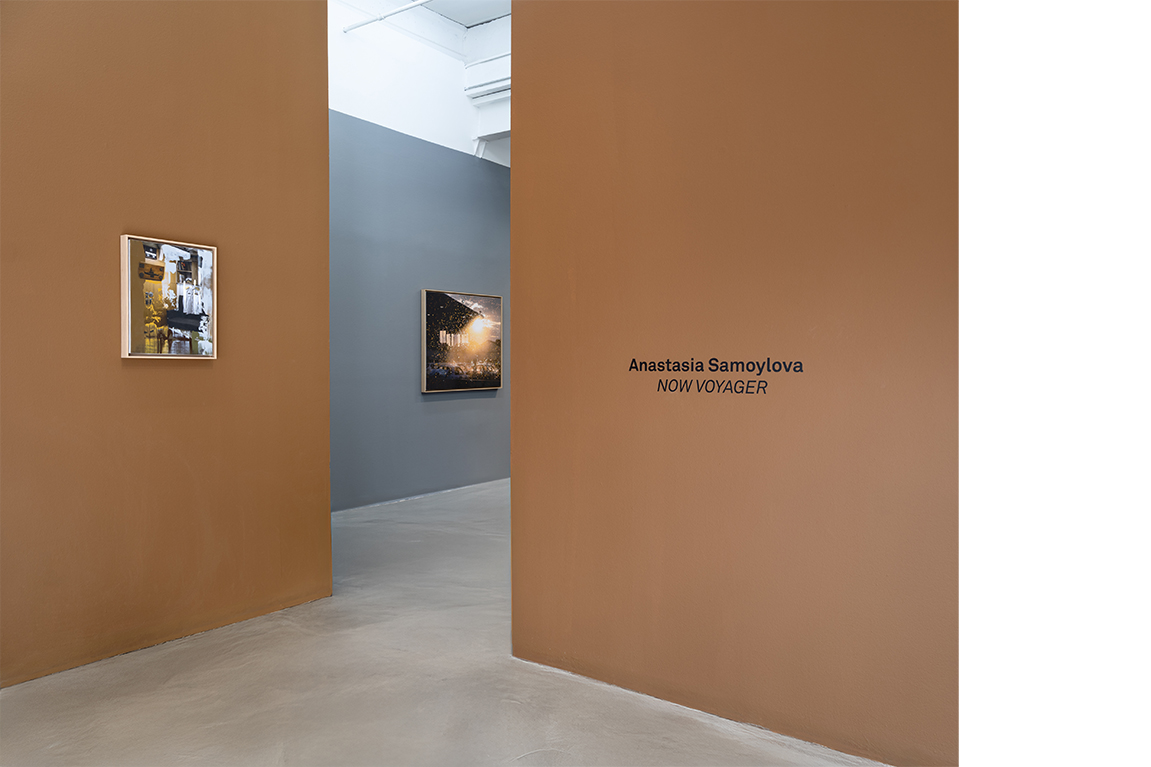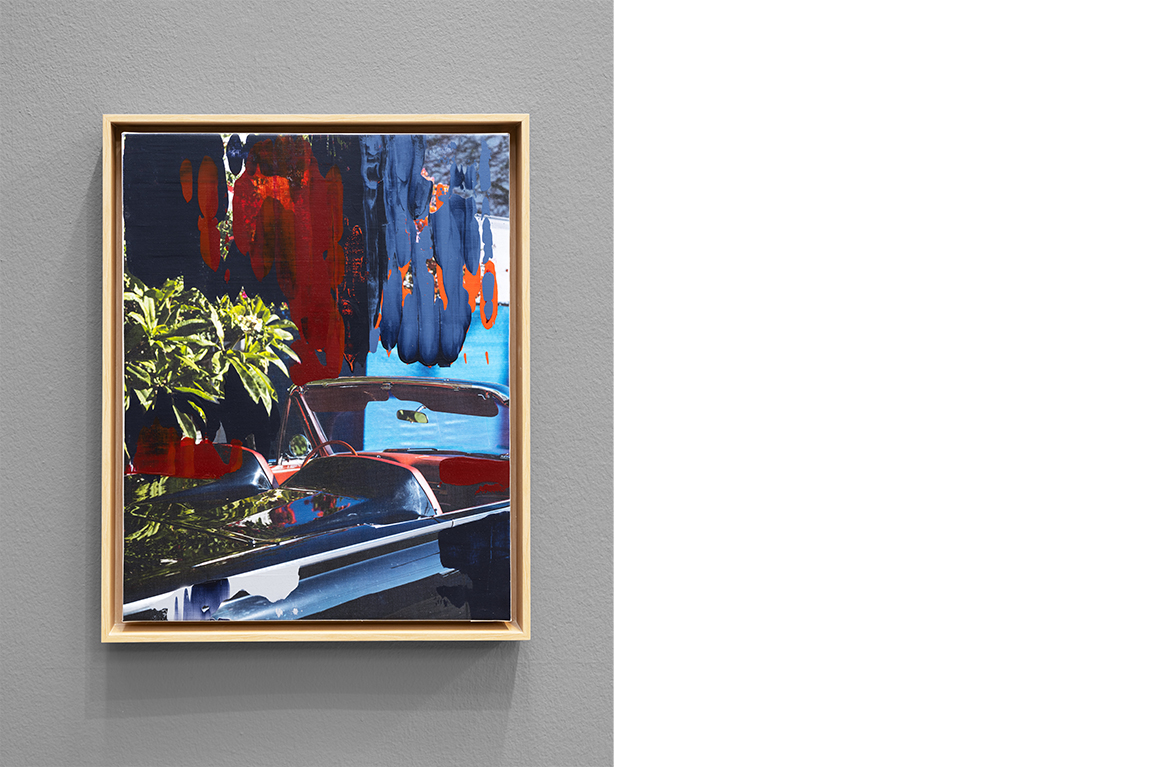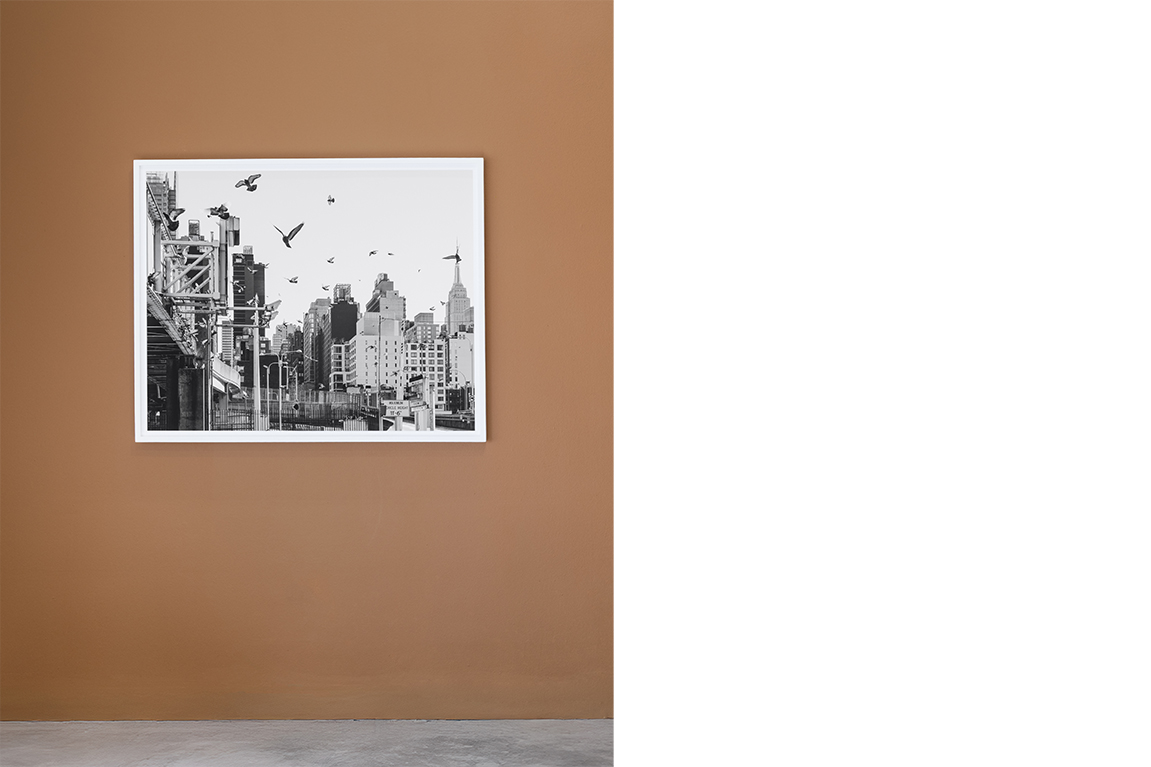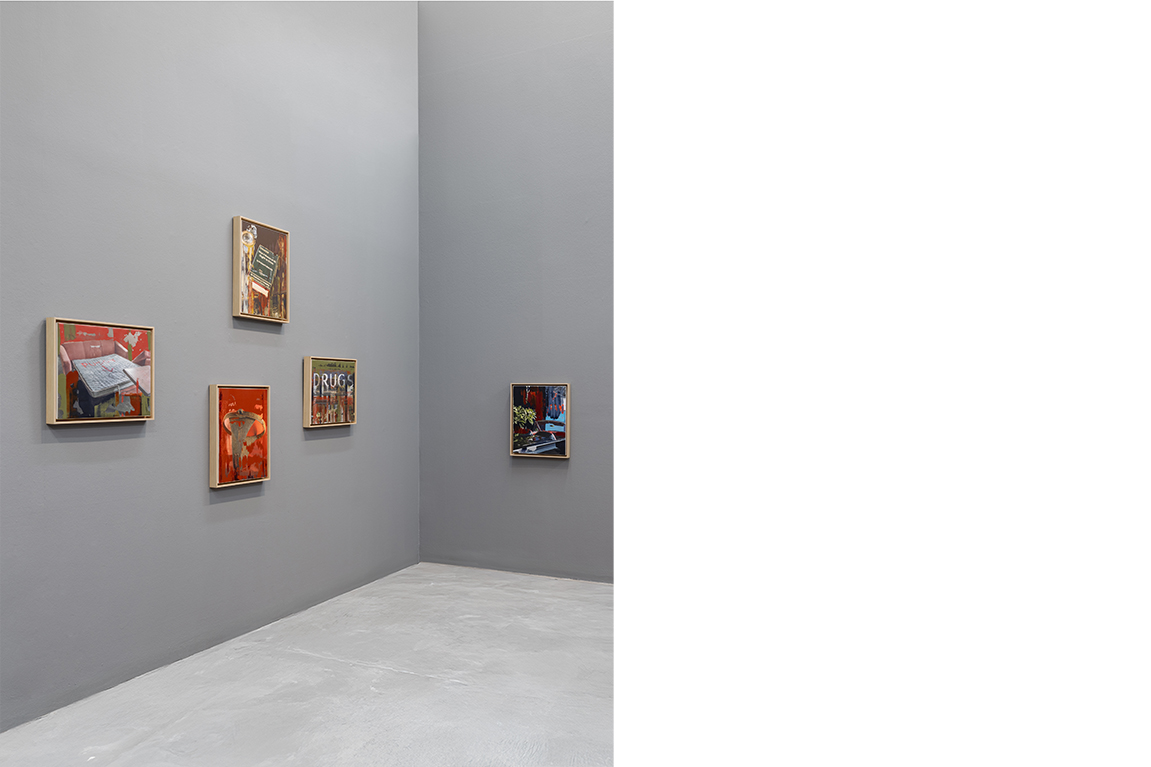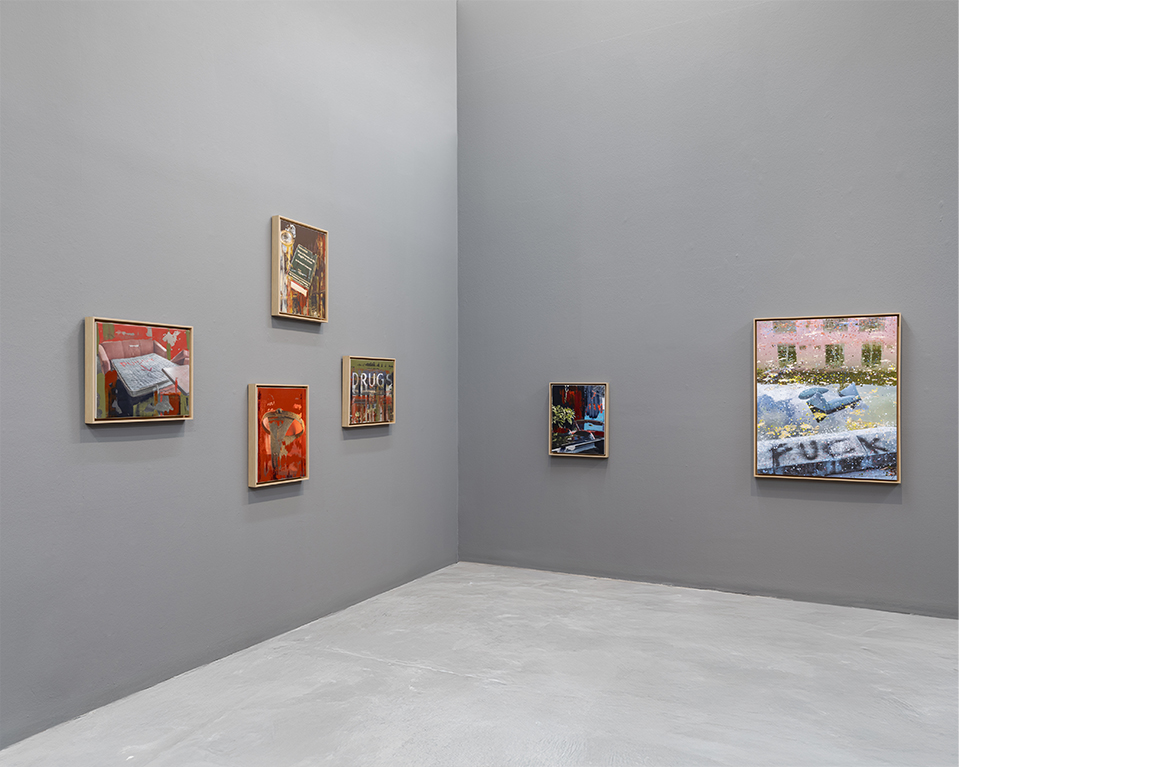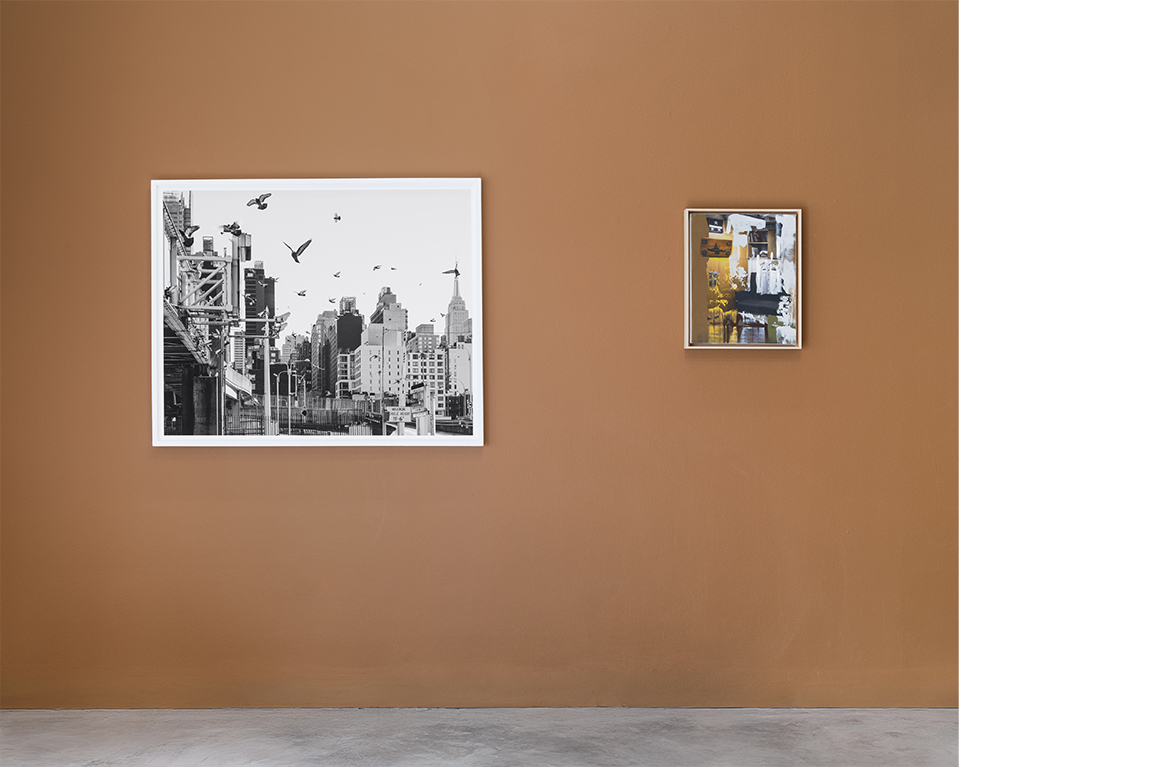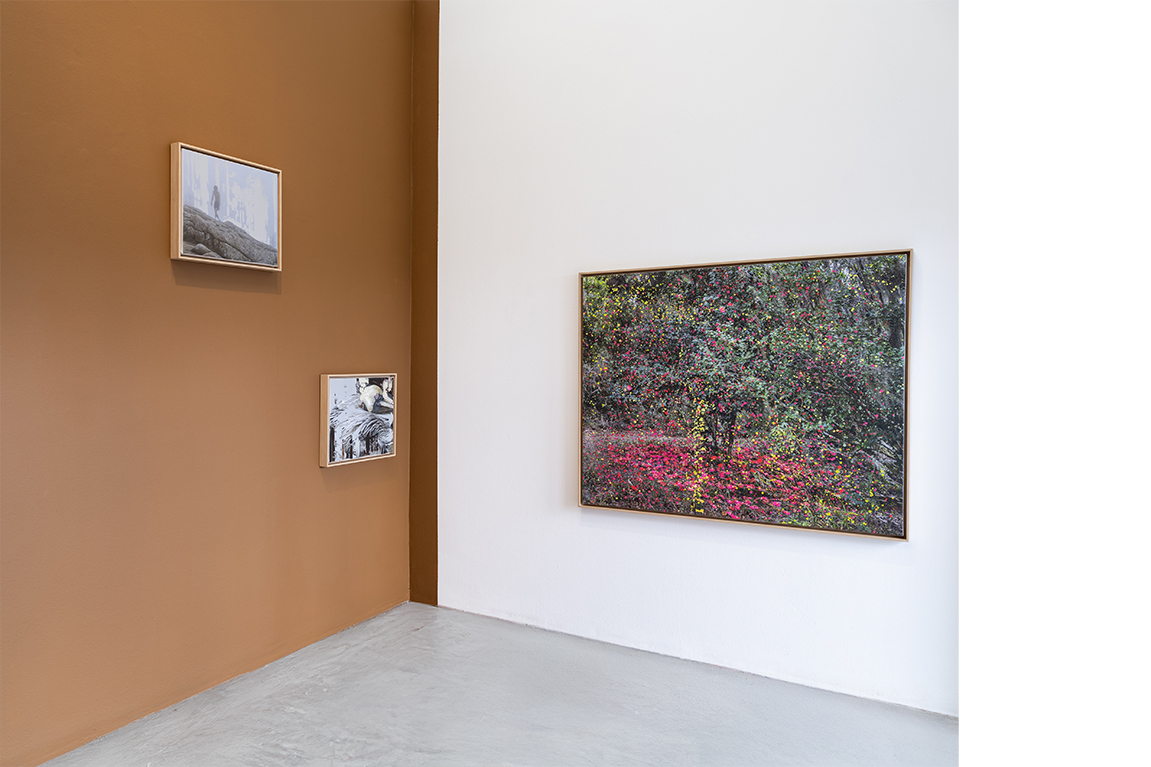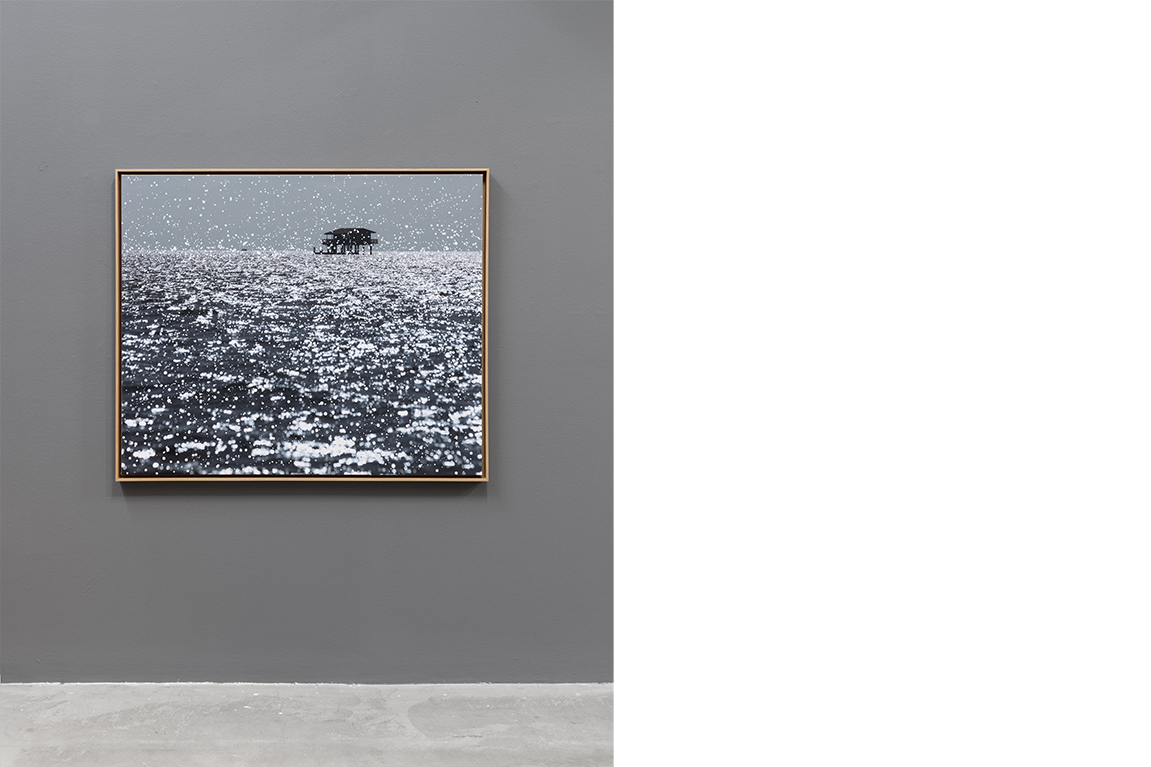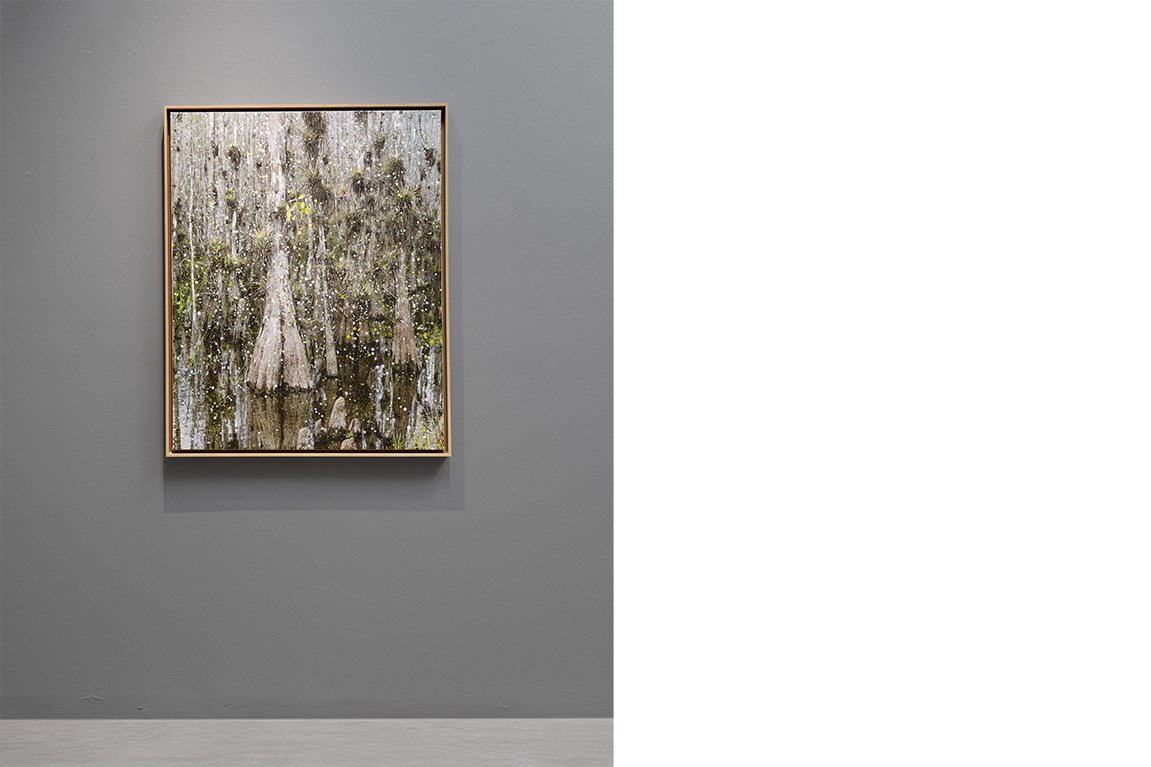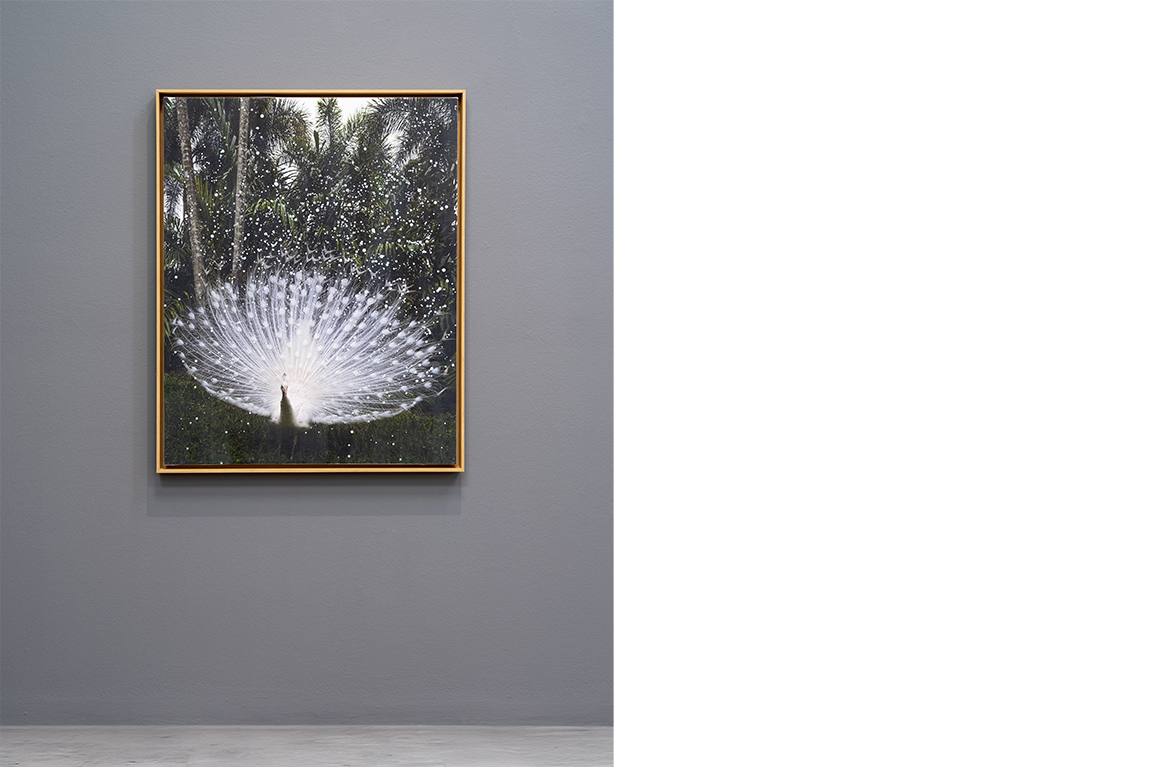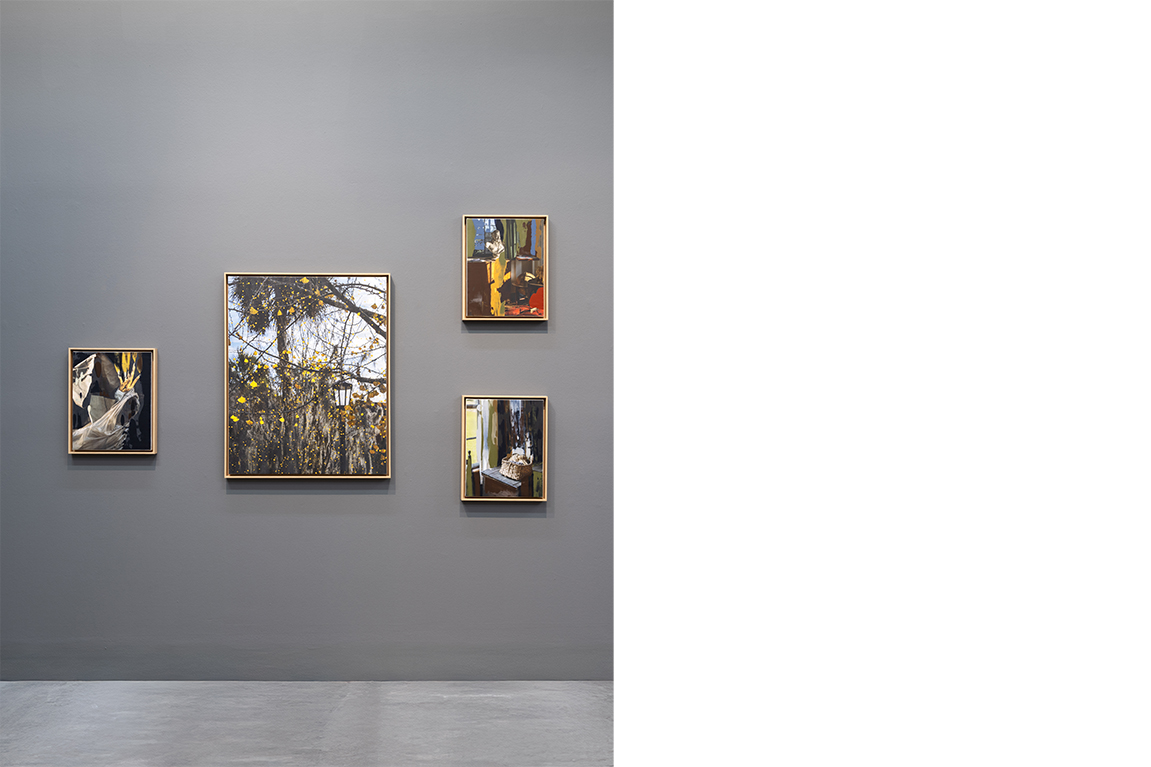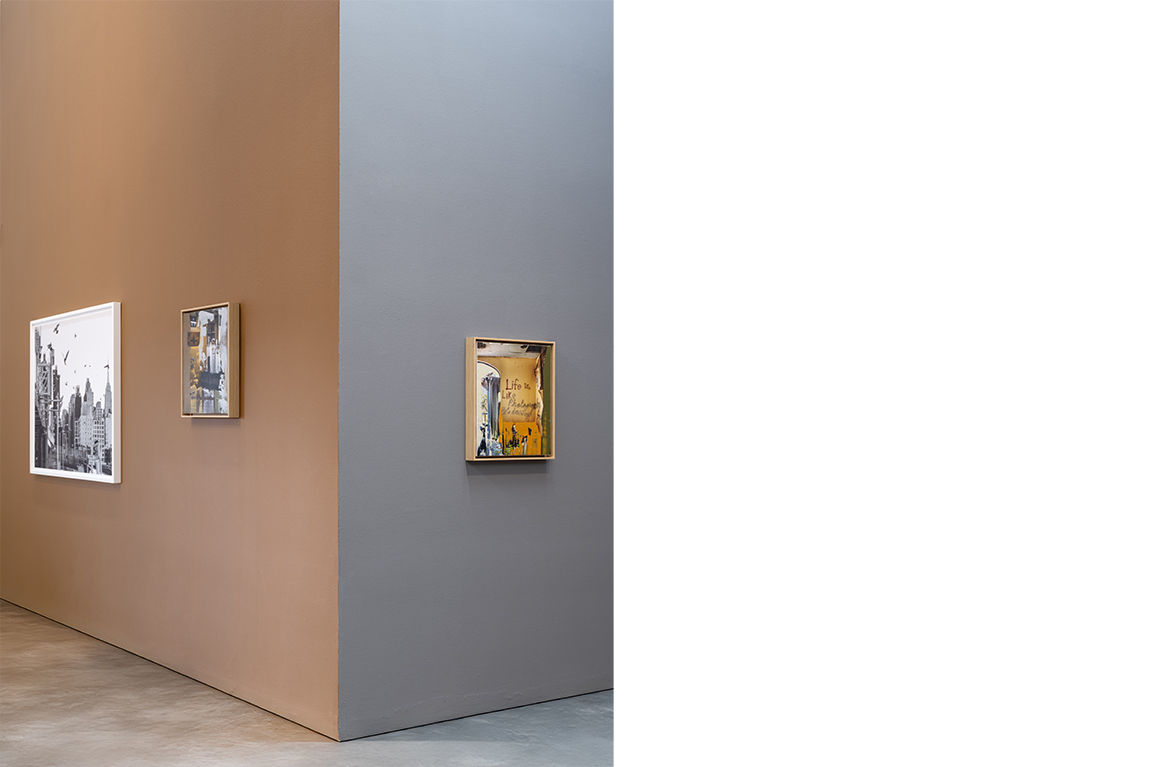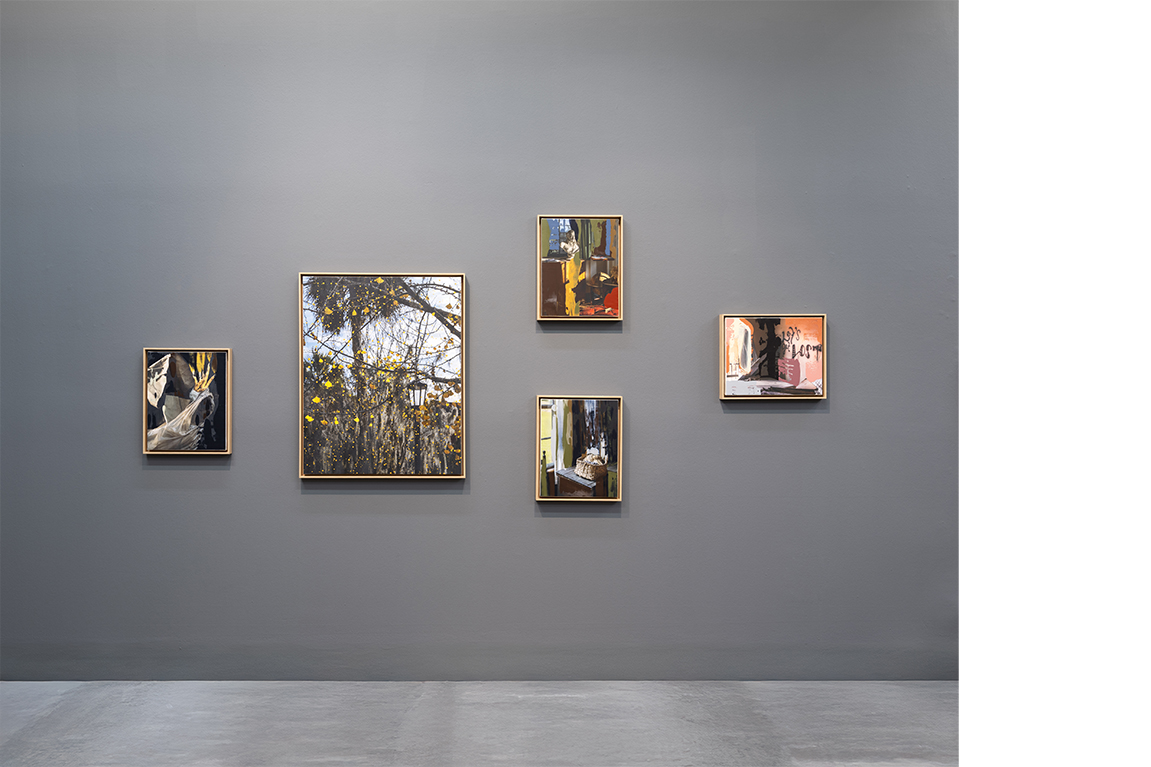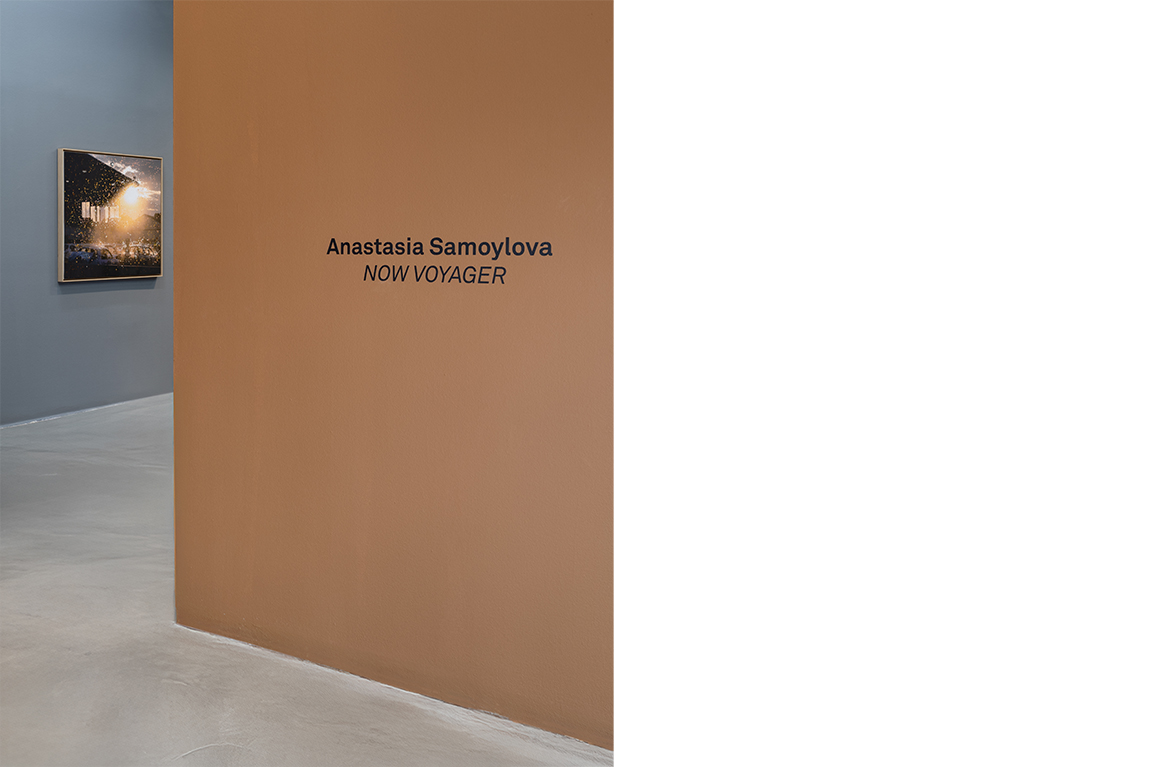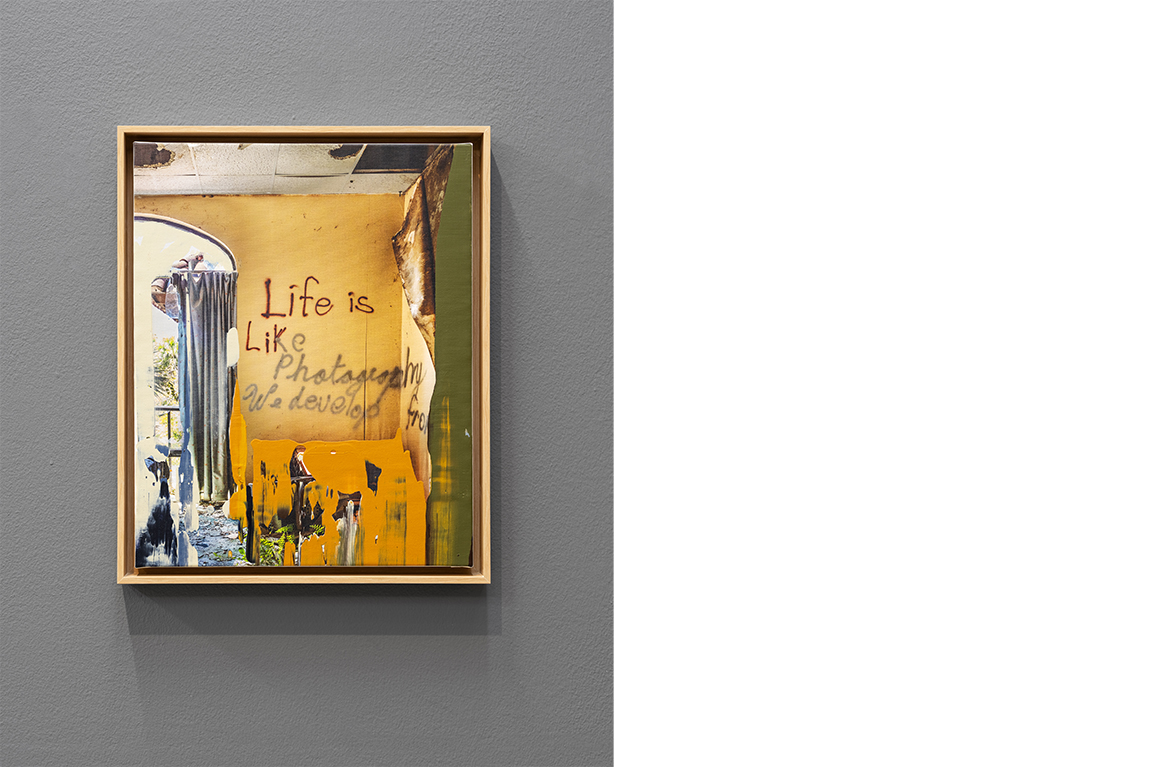NOW VOYAGER
Anastasia Samoylova
On View: Nov 30, 2025 - Feb 1, 2026
Anastasia Samoylova
On View: Nov 30, 2025 - Feb 1, 2026
In Now, Voyager, Samoylova extends her photographic language into the territory of painting—and of reckoning. These hybrid works, formed by overlaying photographs with poured and dripped paint, inhabit a charged space between document and abstraction, between the seen and the felt. Taking its title from Walt Whitman’s exhortation, “Now, Voyager, sail thou forth, to seek and find,” the series follows the artist’s ongoing search for meaning within the shifting image of America.
Where earlier projects—FloodZone, Floridas, Image Cities, and Atlantic Coast—mapped how ideology and desire shape the visual landscape, Now, Voyager turns inward. Here, paint moves across the photographic surface like weather: flooding, obscuring, illuminating. The gesture transforms the image into something volatile and alive, a metaphor for both renewal and erasure.
The works oscillate between lushness and abrasion: a peacock’s plume dissolves into a storm of white pigment; a veteran salutes amid roses; a roadside room bears the inscription, “Life is like photography, we develop”; a tattered flag and a graffitied sofa evoke private histories of longing and loss. Each piece becomes a meditation on what endures when ideals falter—how beauty and disillusionment coexist in the same frame.
In dialogue with Rauschenberg, Richter, and Polke, Samoylova’s overpainted photographs resist both cynicism and nostalgia. They propose instead a form of seeing that is restless and searching—a voyaging through the emotional and symbolic terrain of a country still in the process of defining itself.
Concurrent Museum Exhibition and Publication
Now, Voyager coincides with Samoylova’s major solo exhibition Atlantic Coast at the Norton Museum of Art in West Palm Beach, on view November 15, 2025 – March 1, 2026.
Following the path of Berenice Abbott’s 1954 photographic journey along U.S. Route 1, Atlantic Coast examines the intertwined myths of movement, identity, and the American landscape.
The exhibition accompanies the release of Samoylova’s fifth book, Atlantic Coast, co-published by Aperture and the Norton Museum of Art. The publication expands on the project, offering a timely meditation on place, displacement, and the evolving American dream—seventy years after Abbott first traced the same route.
About the Artist
Anastasia Samoylova (b. 1984, Moscow) is a Miami-based artist whose work considers the layered intersections of environmentalism, consumerism, politics, and the aesthetics of everyday life. Her work has been exhibited at The Metropolitan Museum of Art, Norton Museum of Art, Nasher Museum of Art, C/O Berlin, Victoria and Albert Museum Dundee, Fundación MAPFRE Madrid and Barcelona, Amerikahaus Munich, George Eastman Museum, Chrysler Museum of Art, and Kunst Haus Wien, among others.
Her photographic monographs include FloodZone (Steidl, 2019), Floridas (Steidl, 2022), Image Cities (Fundación MAPFRE / Hatje Cantz, 2023), and Adaptation (Thames & Hudson, 2024). Her work is held in the collections of The Museum of Modern Art, The Metropolitan Museum of Art, Pérez Art Museum Miami, High Museum of Art, and the Museum of Contemporary Photography, among others.



